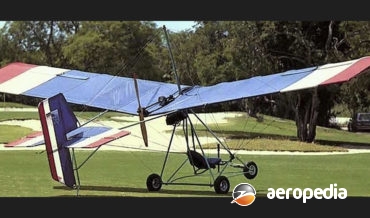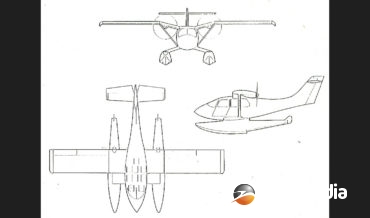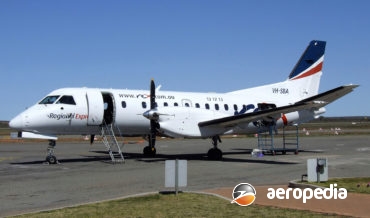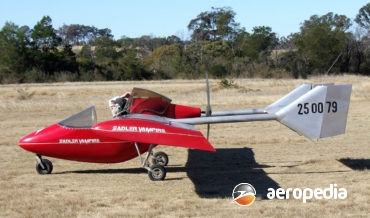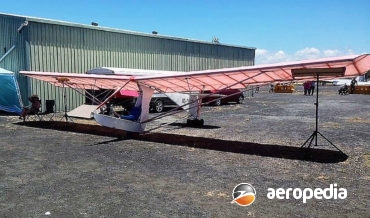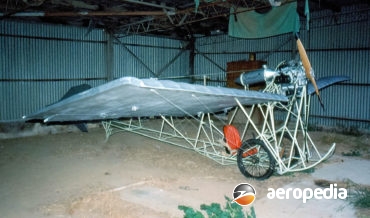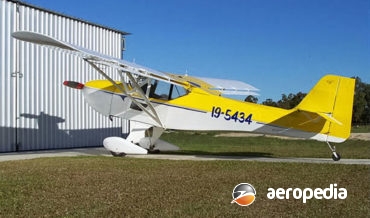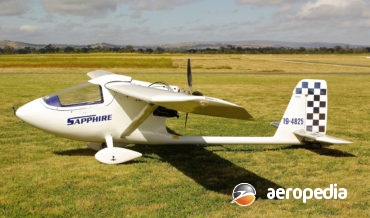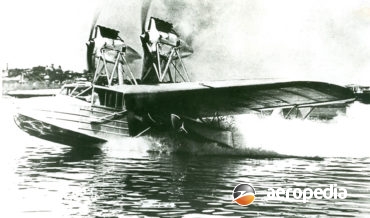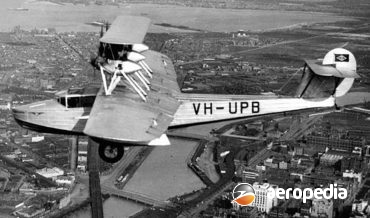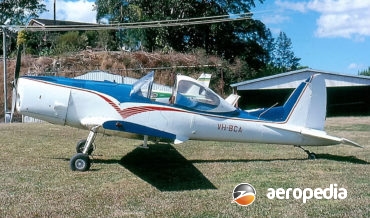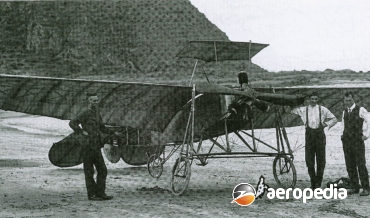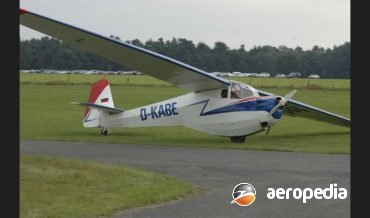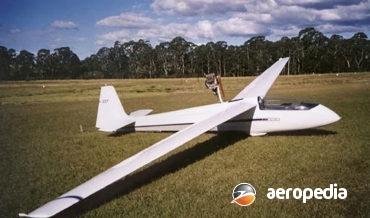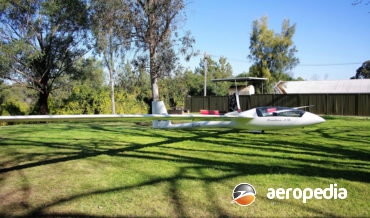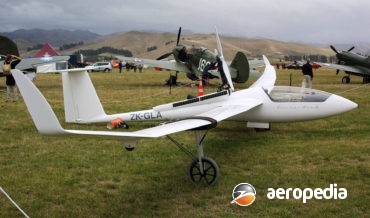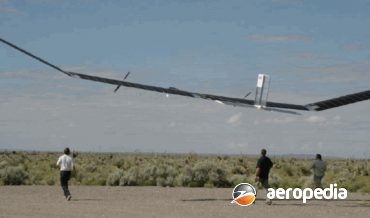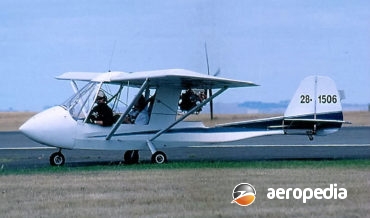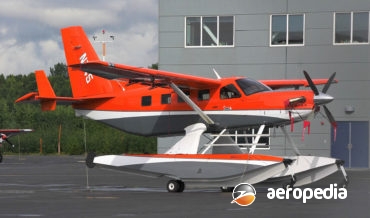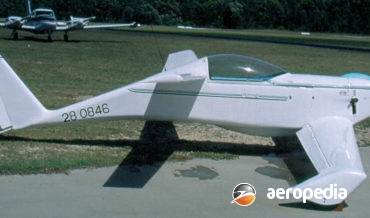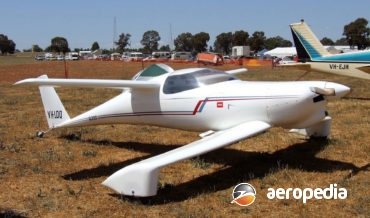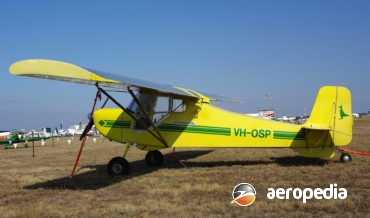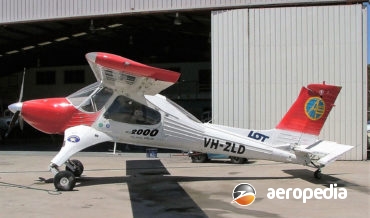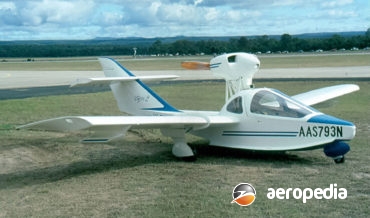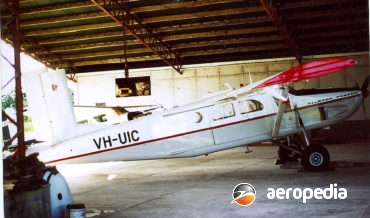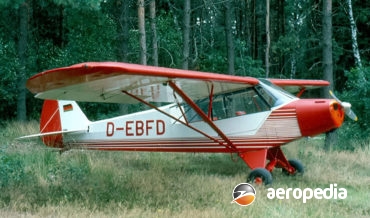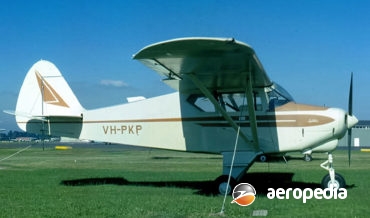David C. Eyre
The Shearwater is a four-seat amphibian designed by Mr W Townson and built by his company, Seaflight (NZ) Ltd over a period of seven years, the prototype ( initially ZK-SFA – c/n 1) making its first taxiing trials on Mahurangi Waters in early 2001, and making its first flight later
David C. Eyre
- May 8, 2019
The Condor is a two-seat light sporting aircraft designed by Messrs Bud Head, Robert Carswell and David French of Seahawk Industries and was initially supplied in kit form by that Company, being basically a development of the Eipper Quicksilver series.
David C. Eyre
- May 8, 2019
Seair Pacific Pty Ltd of Airlie Beach, QLD was set up in the mid-1980s to build a full-size prototype of an eight-passenger commercial seaplane powered by two engines in the pusher configuration.
David C. Eyre
- May 8, 2019
The Sunbird was a single-seat low-wing monoplane designed and built by Mr Kevin Sedgman .
David C. Eyre
- May 8, 2019
Over the years manufacturers have looked at the requirements of commuter airlines with a view to producing new airliners to meet operator requirements.
David C. Eyre
- May 8, 2019
Built by Svenska Aeroplane AB at Linkoping in Sweden, the Safir was an all-metal training monoplane produced for the Swedish Airforce.
David C. Eyre
- May 8, 2019
The Sadler Vampire was a single-seat ultra-light aircraft designed by Bill Sadler and built in the United States, 28 aircraft being built there before a downturn in the fortunes of the industry led to production ceasing.
David C. Eyre
- May 8, 2019
The Goat series of ultralight basic gliders was designed by Michael Sandlin in the United States, it being a parasol wing, single-seat glider for which Mr Sandlin produced technical drawings for construction by amateur builders.
David C. Eyre
- May 8, 2019
Alberto Santos-Dumont (1873-1932) was a wealthy Brazilian living in Paris, France and he played an important part in promoting the design and construction of airships for some years from 1898, and was one of the first ‘Aeronauts’ to build and fly an airship in controlled and sustained flight.
David C. Eyre
- May 8, 2019
The Bushbaby is South Africa’s most successful kit aircraft, produced in some numbers since the early 1990s.
David C. Eyre
- May 8, 2019
The Sapphire was originally designed and built in Australia by Scott Winton to CAO.19.
David C. Eyre
- May 8, 2019
S E Saunders Ltd (later Saunders Roe) on the Isle of Wight was set up in the 1920s to design and construct amphibians and flying boats, and one of the first designs produced by the Company was the Saro A.17 Cutty Sark.
David C. Eyre
- May 8, 2019
The Saro A.21 Windover was of similar configuration to the Cutty Sark but was larger and had three Gipsy II engines and could accommodate a crew of two and six passengers.
David C. Eyre
- May 8, 2019
During the 1960s some conversion work was carried out on a number of de Havilland Chipmunks in Australia to increase their performance.
David C. Eyre
- May 8, 2019
The Savage Monoplane, or Savage Special as it was also known, was one of a small number of New Zealand-designed and amateur-built aircraft to be successfully flown, having been granted a Certificate of Airworthiness.
David C. Eyre
- May 8, 2019
The S.16 was a passenger carrying flying-boat built in Italy by the Societa Idrovolanti Alti Italia (SIAI) for operations of civil passenger carrying and was powered by a Fiat A.12bis engine.
David C. Eyre
- May 8, 2019
Arthur Waldermar Schaef was one of the more successful early aircraft designers and builders who lived in this part of the world in the early 20th Century.
David C. Eyre
- May 8, 2019
The SF-24 Motorspatz is a two-seat self-launched glider developed and built in Germany for training purposes. Scheibe over the years has developed a number of gliders, a few of which have been motorised.
David C. Eyre
- May 8, 2019
This series of gliders was introduced to the Company’s range in 1964, being a development of the earlier Zugvogel and SF-26, the SF-27A being a standard Class design for competition.
David C. Eyre
- May 8, 2019
The Arcus was developed by Schempp-Hirth Flugzeugbau GmbH in Germany as a two-seat 20-meter high-performance glider and employed the latest developments in aerodynamic research and has been described as a high-performance and practical aircraft and complements the Company’s Duo Discus series of gliders.
David C. Eyre
- May 8, 2019
The Discus series of gliders was designed by Klaus Holighaus and more than 850 examples of various models have been built, most as Standard Class gliders.
David C. Eyre
- May 8, 2019
Like all gliders produced by Schempp-Hirth GmbH in recent years, the Janus is of fibreglass construction and is of two seat configuration.
David C. Eyre
- May 8, 2019
The Nimbus series of gliders over the years produced by Schempp-Hirth in Germany, and designed by Klaus Holighaus, has been very popular and has been produced in a number of variants, a number having sustainer engines, and others fitted with Rotax engines and able to self launch.
David C. Eyre
- May 8, 2019
The Ventus is a motorised glider produced by Schempp-Hirth in Germany. It was produced during the years 1980 to 1994 and was designed by Klaus Holighaus and replaced the Mini-Nimbus on the production line.
David C. Eyre
- May 8, 2019
The Zephyr is a solar-powered, high-altitude long-endurance UAV initially developed by QinetiQ, a British company, but which became part of the Airbus High Altitude Pseudo-Satellite (HMAPS) program, becoming known as the Airbus Zephyr
David C. Eyre
- May 8, 2019
With more than 500 examples built, and over 750 kits sold around the world, the Quad City Challenger series has been very popular on the ultra-light / micro-light market, being available in a variety of models
David C. Eyre
- May 8, 2019
The Kodiak is a new, high-wing, fixed undercarriage single-engine turboprop powered light transport developed by Quest Aircraft of Standpoint, Idaho
David C. Eyre
- May 8, 2019
The Venture, and its co-produced Spirit, are light sporting aircraft produced in kit form by Questair Inc, which was formed by Edward MacDonough in the United States, the Venture being designed by James Griswold, an engineer with Piper Aircraft
David C. Eyre
- May 8, 2019
In 1975 Gene Sheehan and Tom Jewett began looking for a small, reliable engine with low fuel consumption to power a small, efficient, sporting aircraft
David C. Eyre
- May 8, 2019
The Q2 is a high performance two-seat canard design, a development of the Quickie aimed at the inexperienced first time amateur constructor, with only a small working area and a normal complement of tools
David C. Eyre
- May 8, 2019
The Sassy is marketed by Protech Aircraft Inc in Houston, Texas, and is a simple-to-build two-seat side-by-side amateur built aircraft with STOL performance.
David C. Eyre
- May 8, 2019
The PZL-102 Kos (Blackbird) was designed and developed by Polskie Zakladey Lotnicze (PZL), the prototype powered by a 48-kw (65-hp) Narkiewicz four-cylinder horizontally-opposed air-cooled engine flying for the first time on 21 May 1958.
David C. Eyre
- May 8, 2019
PZL was founded in 1928 and has been involved in the construction of aeroplanes for many years.
David C. Eyre
- May 8, 2019
The Osprey was designed as a light two-seat amphibian for the amateur constructor, to be operated from smooth, enclosed areas of water and not from the open sea, for which most amphibian are designed.
David C. Eyre
- May 8, 2019
Derived from the Piaggio P-136-L2 amphibian, and employing a similar gull wing and pusher engine installation, the prototype P-166 was flown for the first time on 26 November 1957.
David C. Eyre
- May 8, 2019
In 1923 Mr. Bernard Pietenpol built a Ford Model T powered biplane and in 1928 he built and flew the prototype of the Aircamper.
David C. Eyre
- May 8, 2019
Pilatus Flugzeugwerke was formed in December 1939 under the leadership of M E Buehrle, the Swiss industrialist and owner of the Oerlikon company.
David C. Eyre
- May 8, 2019
The J-5 Cruiser was a logical development of the earlier and very popular J-3 and J-4 series, designed to provide accommodation for three persons in lieu of two, this being achieved by a modest expansion of the fuselage width
David C. Eyre
- May 8, 2019
The Piper Aircraft Corp in 1947 re-organised its operating procedures and worked towards introducing a new model, the two-seat side-by-side PA-15 Vagabond powered by a 48-kw (65-hp) Lycoming O-145 engine.
David C. Eyre
- May 8, 2019
The Piper Colt was designed by the Piper Aircraft Corporation as a cheap ‘everymans aeroplane’ to sell in the United States for below $5,000 in the early 1960s.
David C. Eyre
- May 8, 2019
Recent Comments
Archives
Categories
- No categories
Categories
- No categories
Latest Posts
Newsletter


